
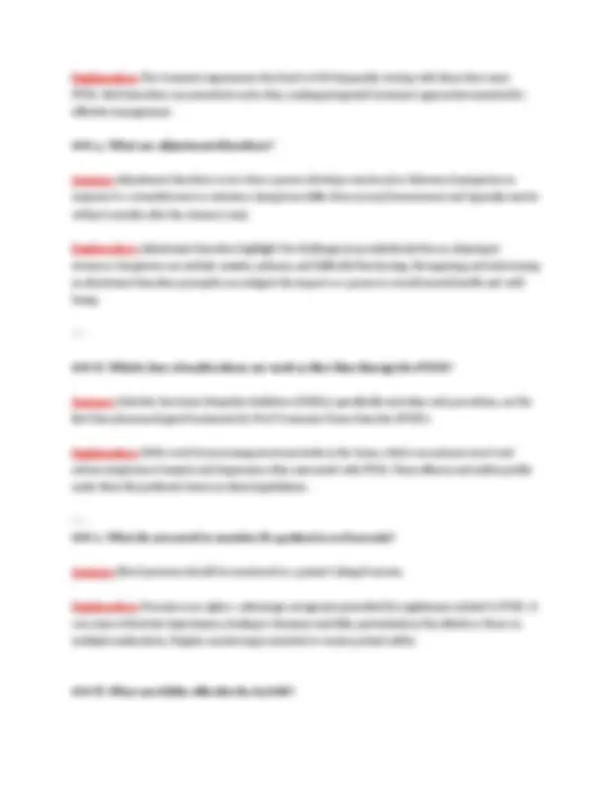
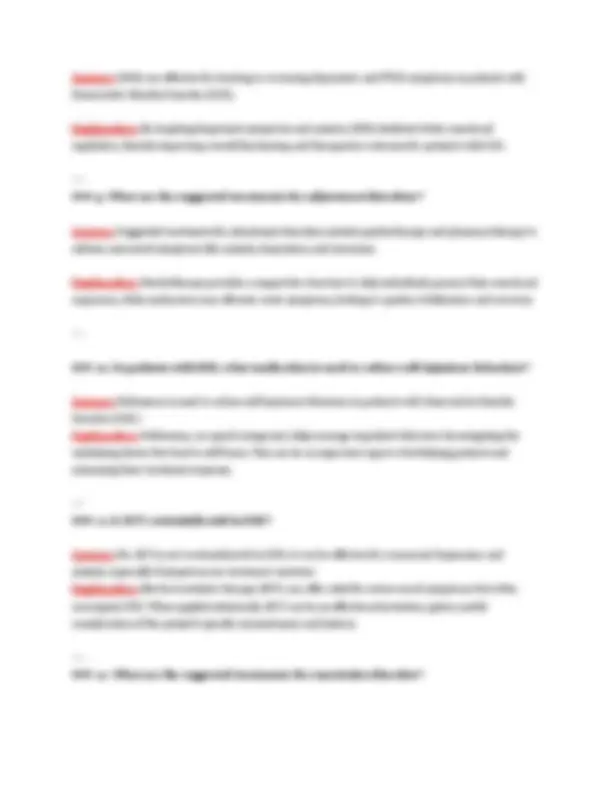
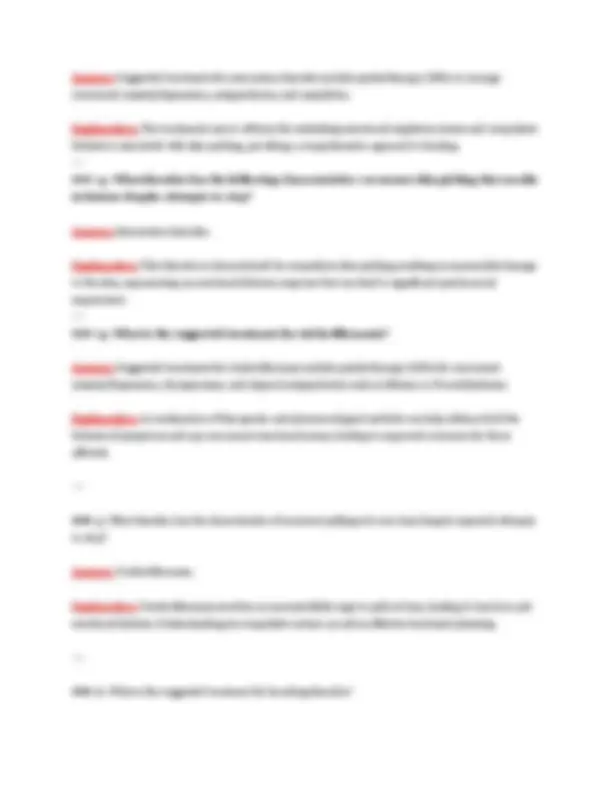
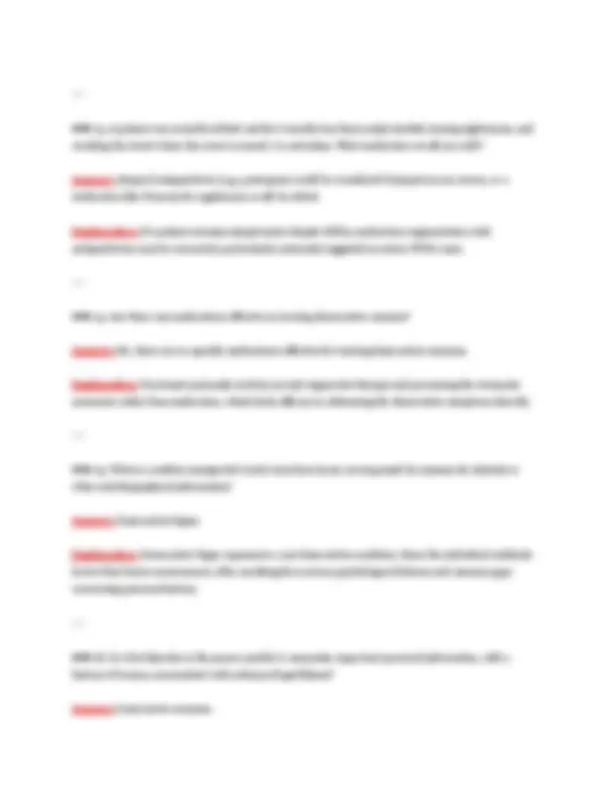
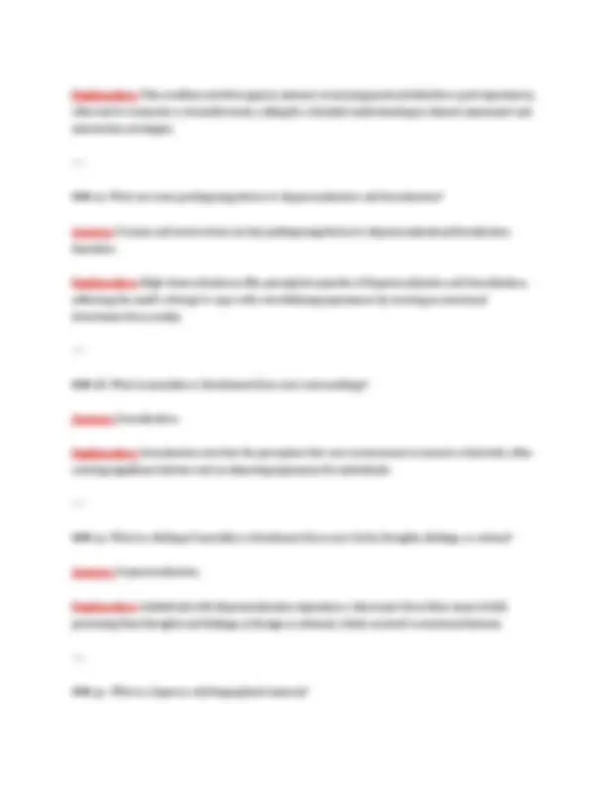
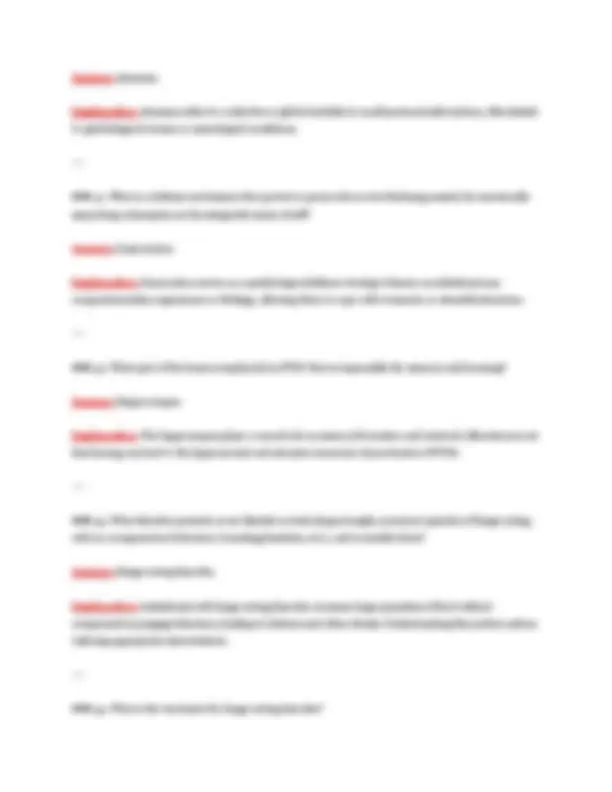
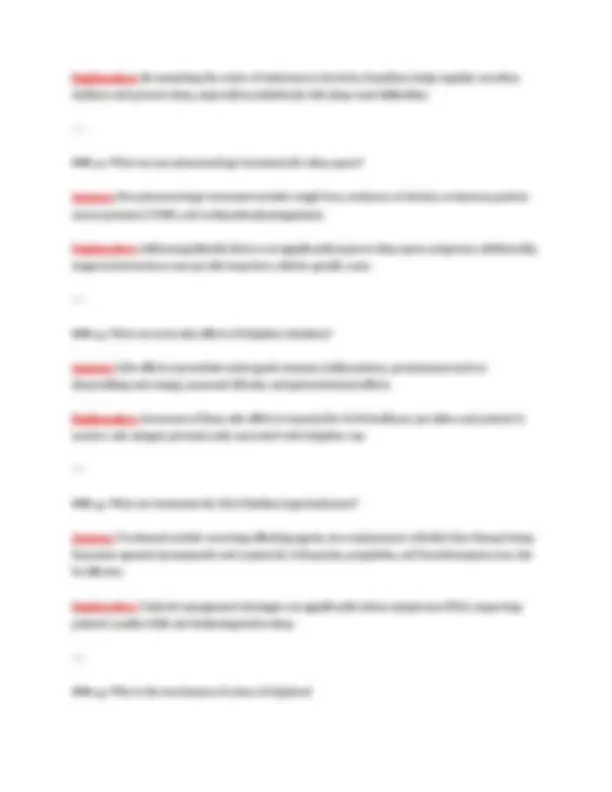
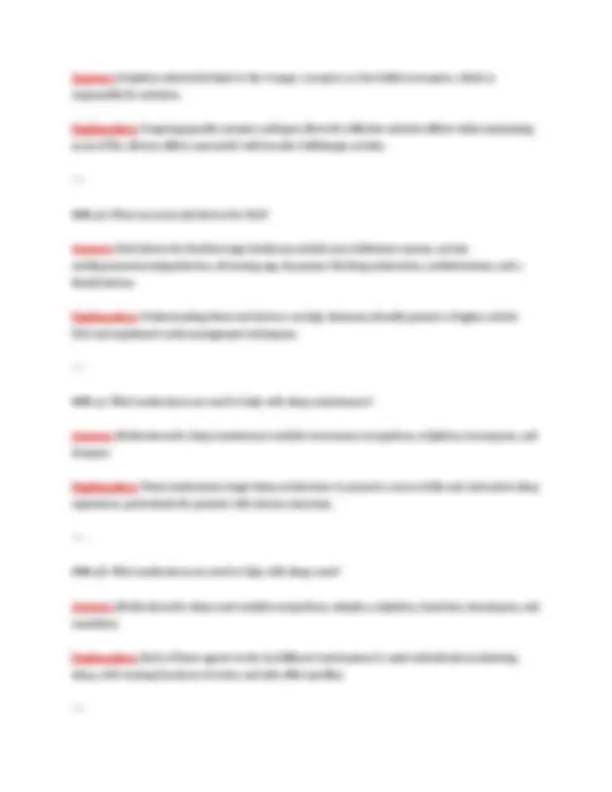
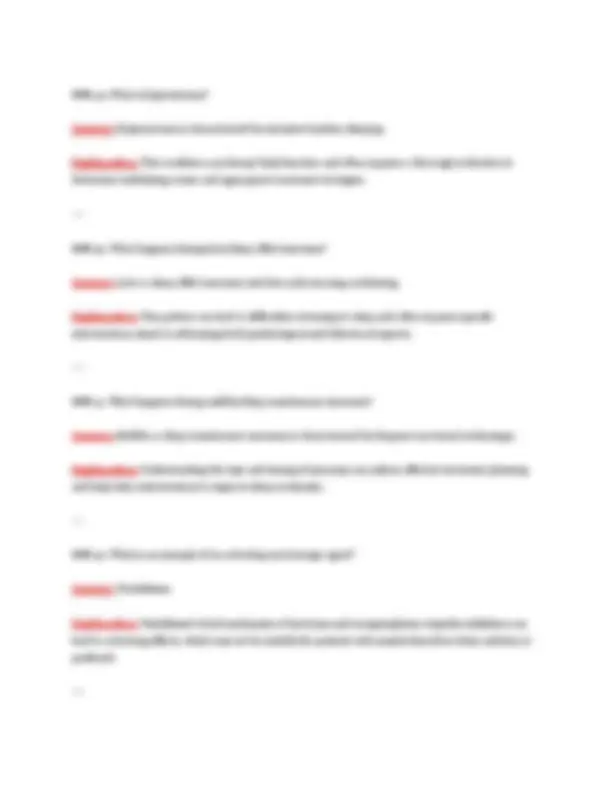
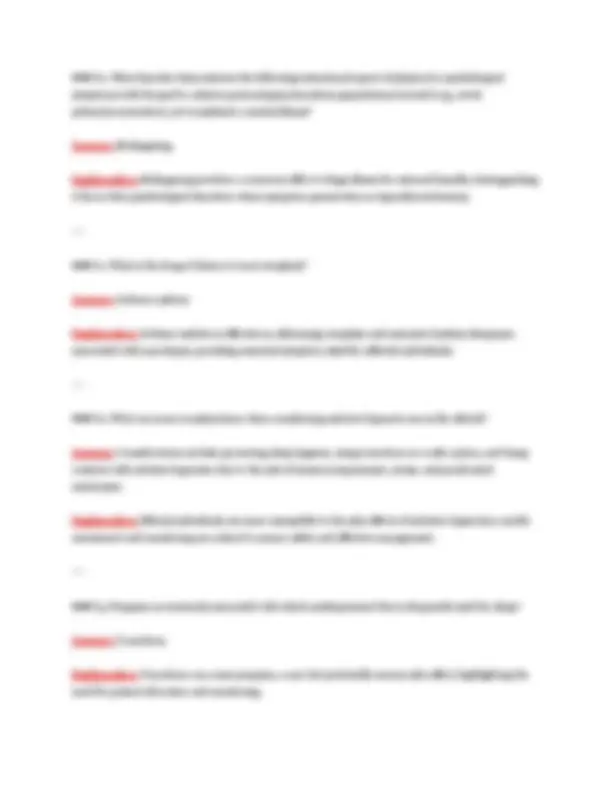
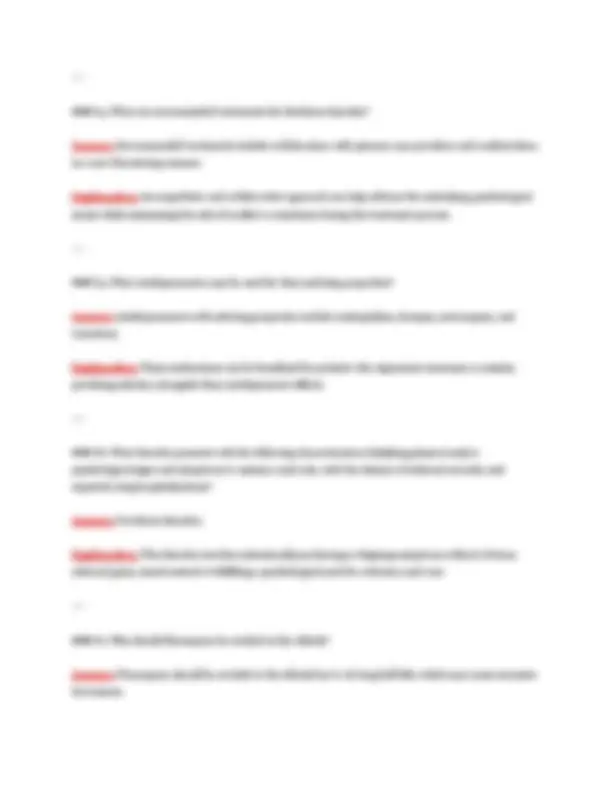
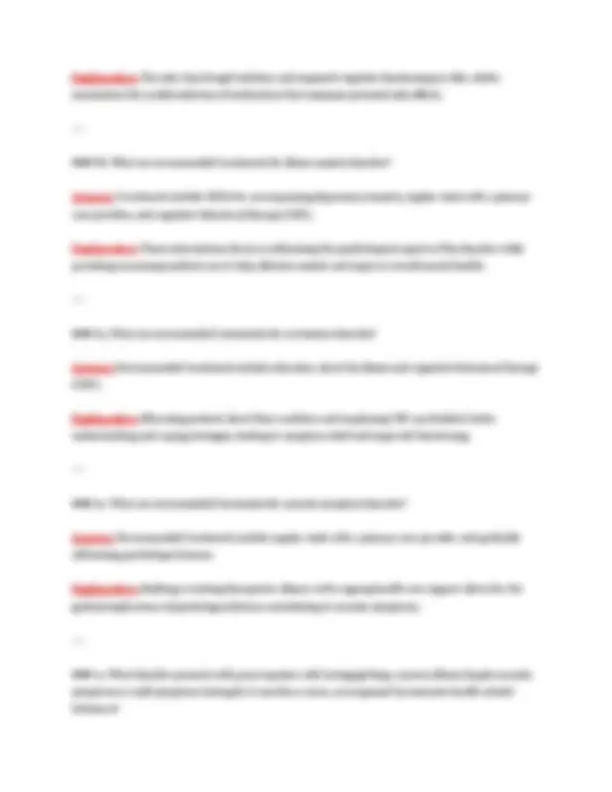
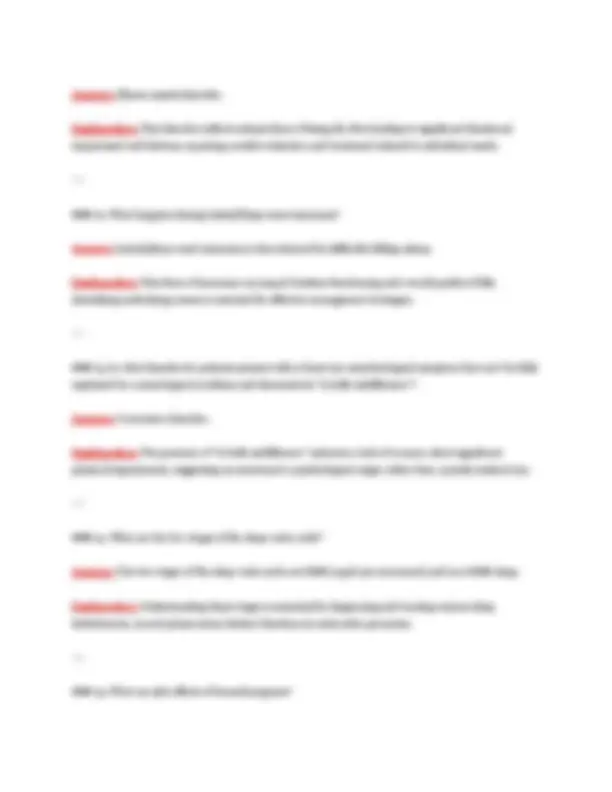
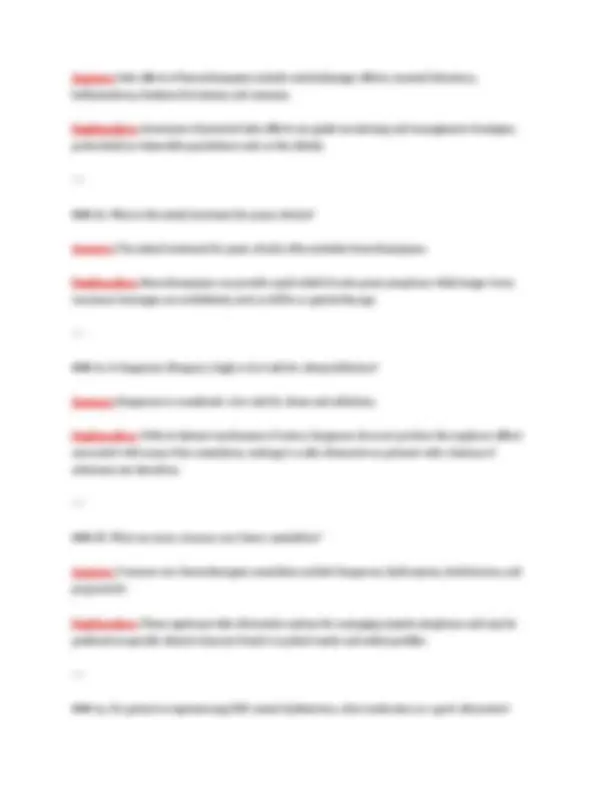
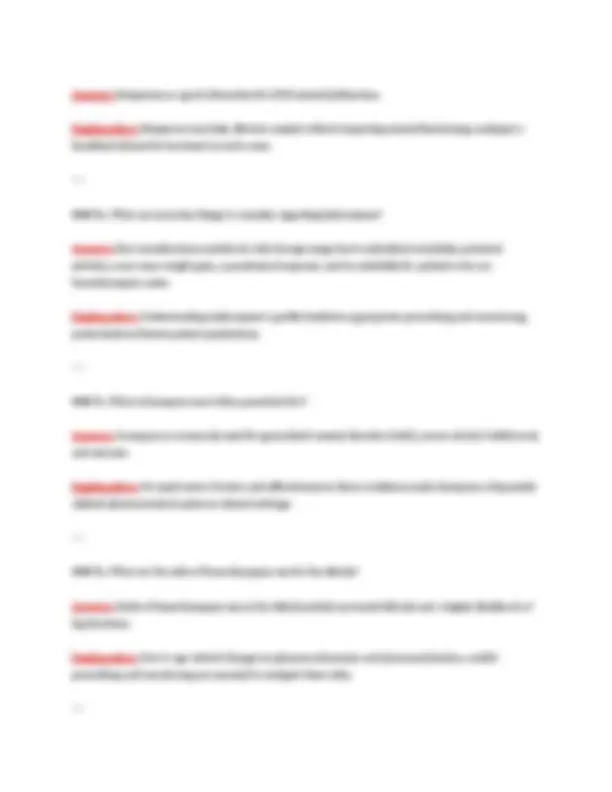
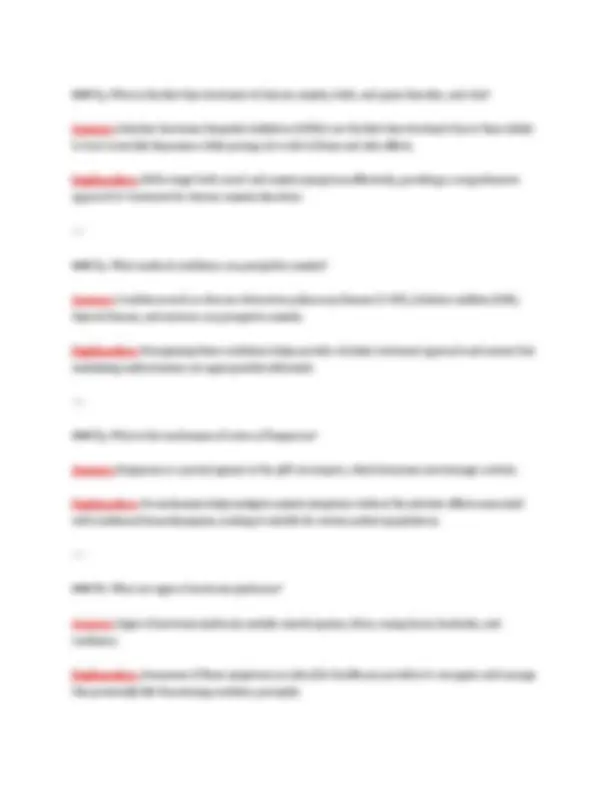
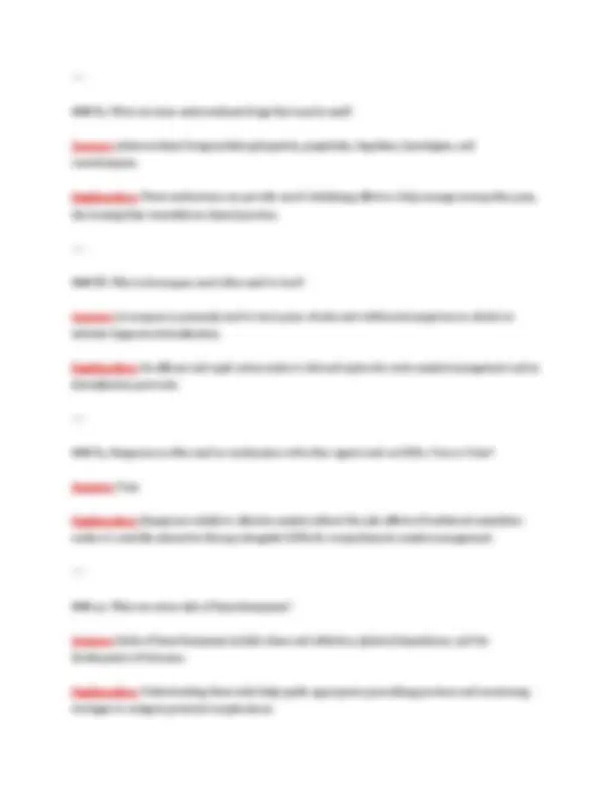
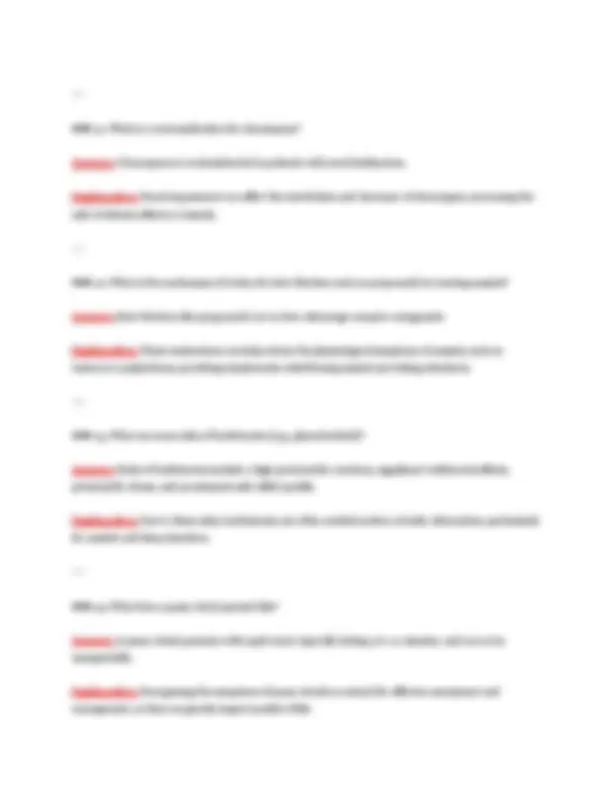
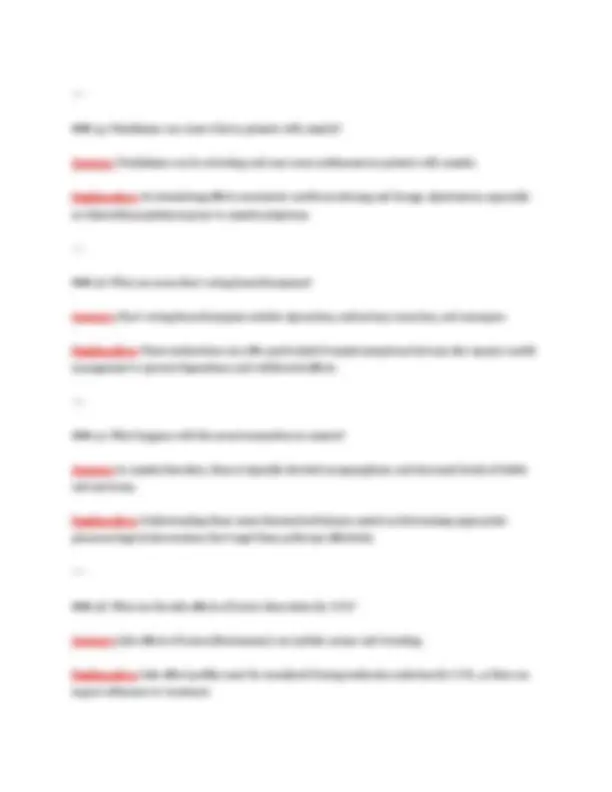
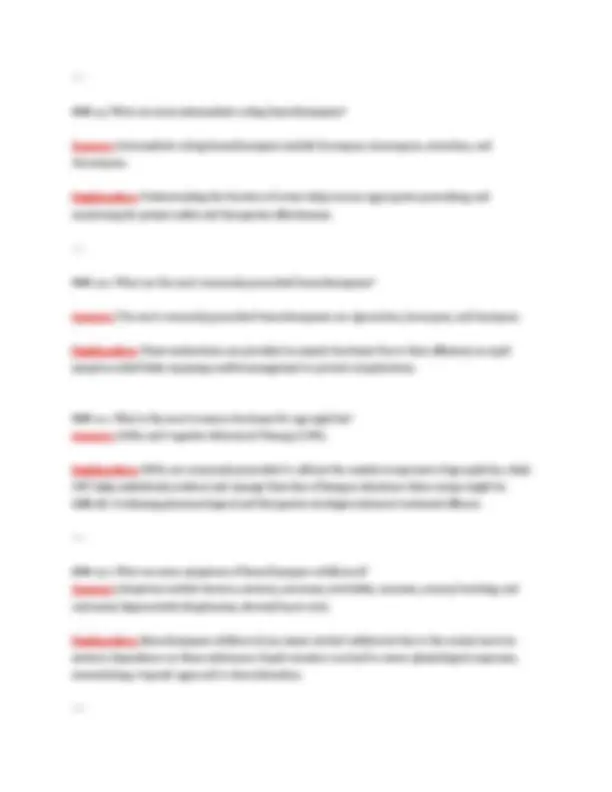
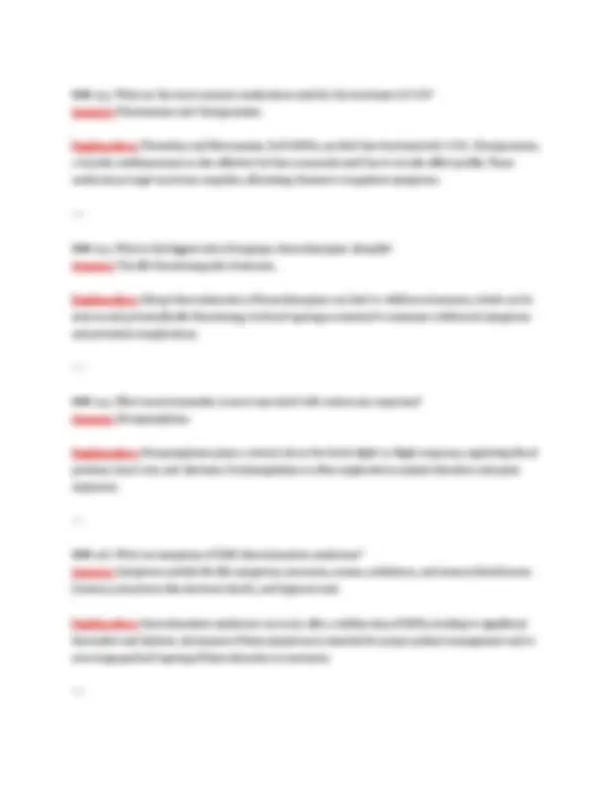
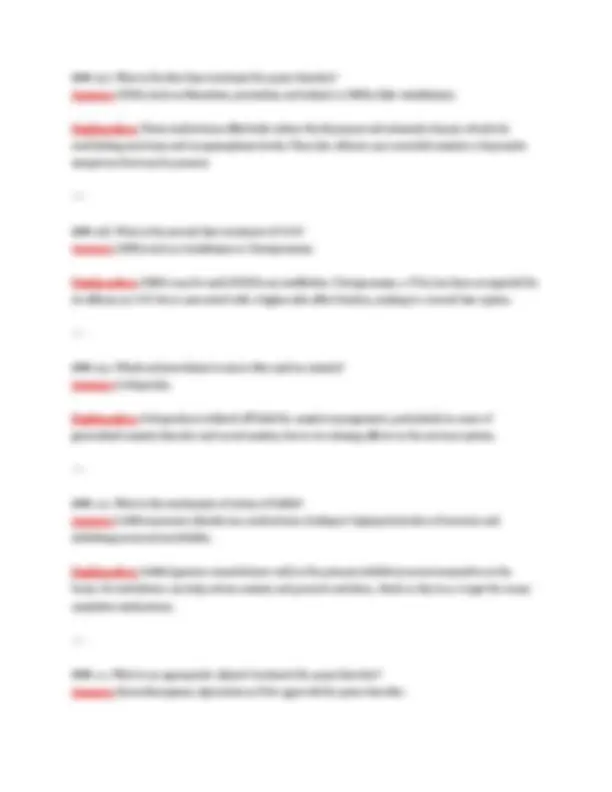
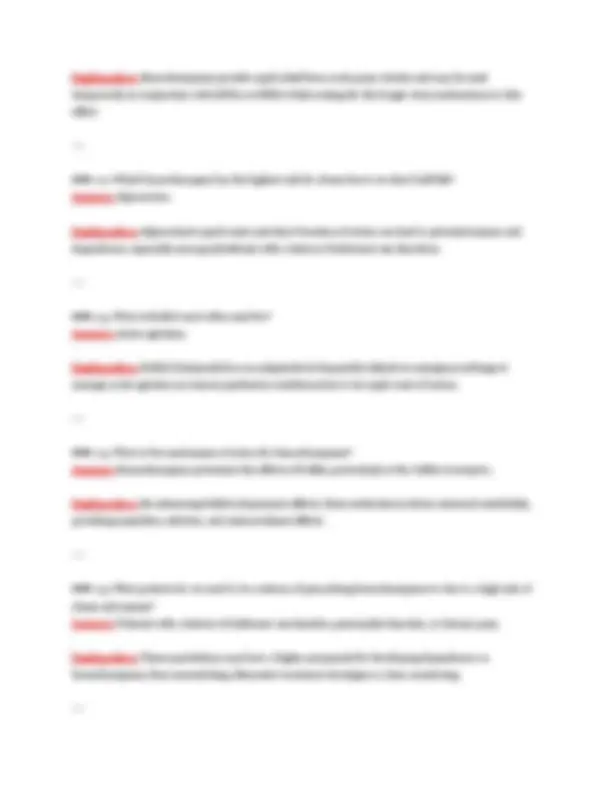
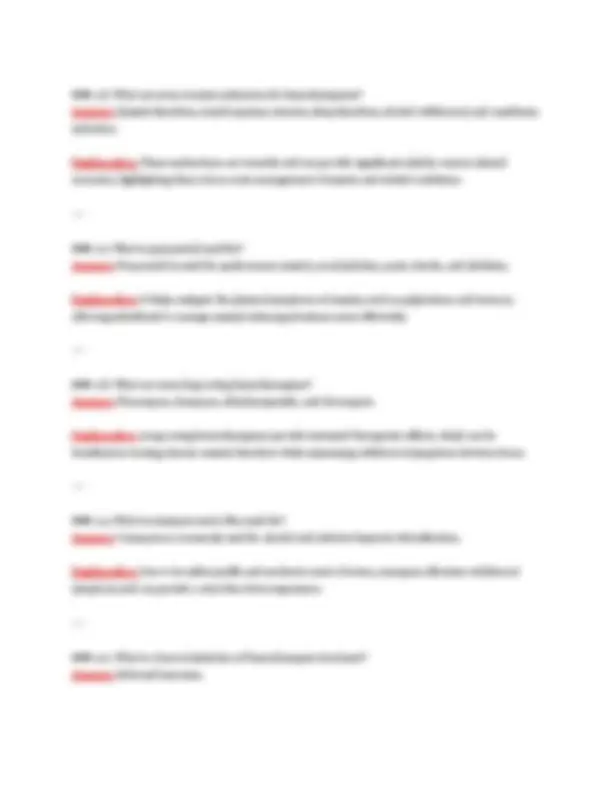
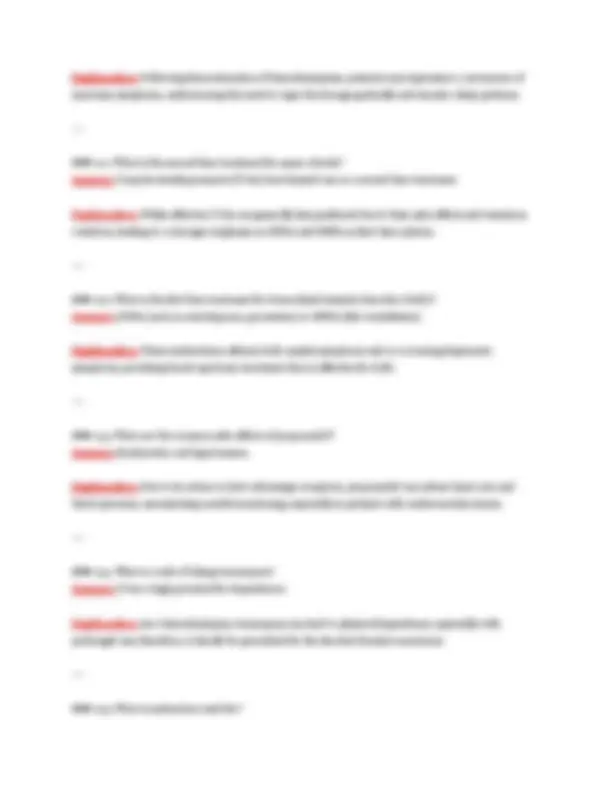
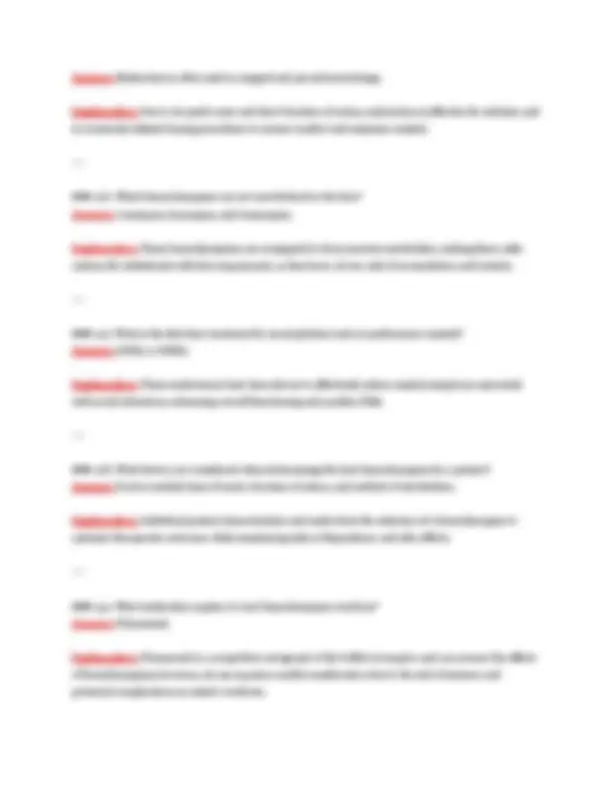
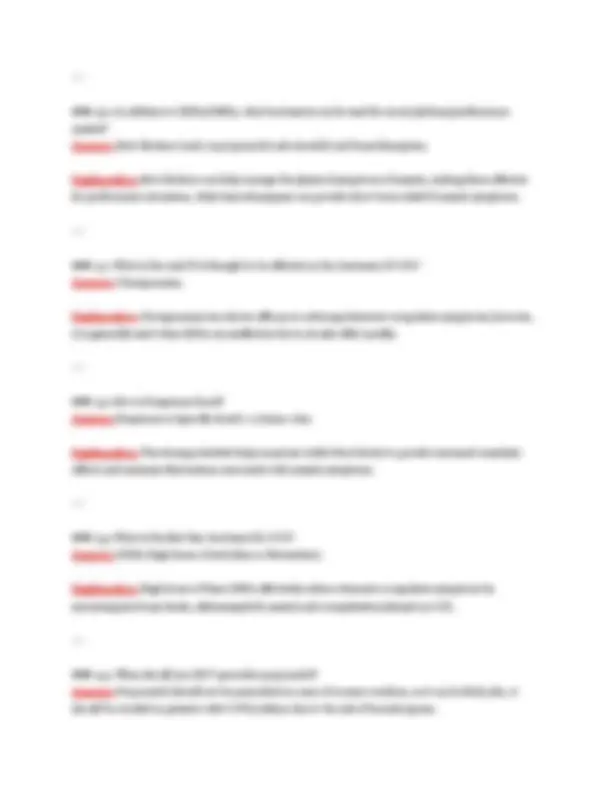
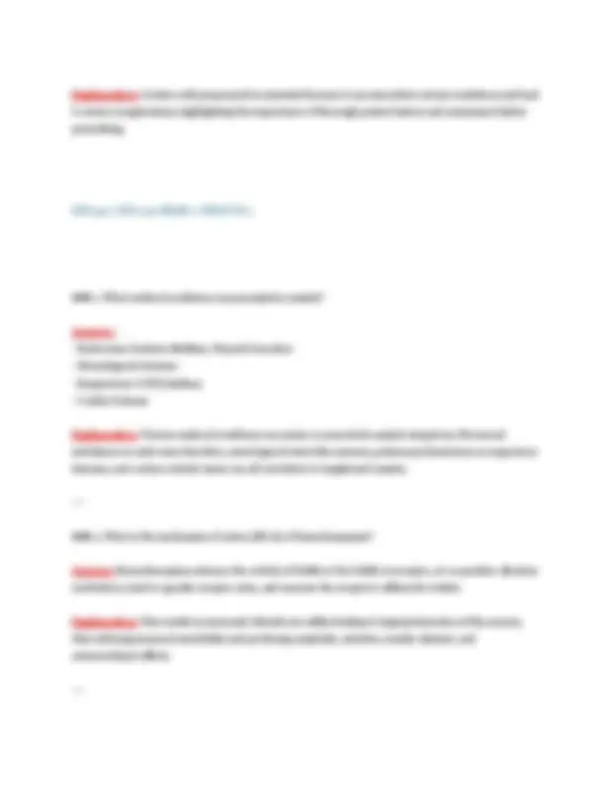
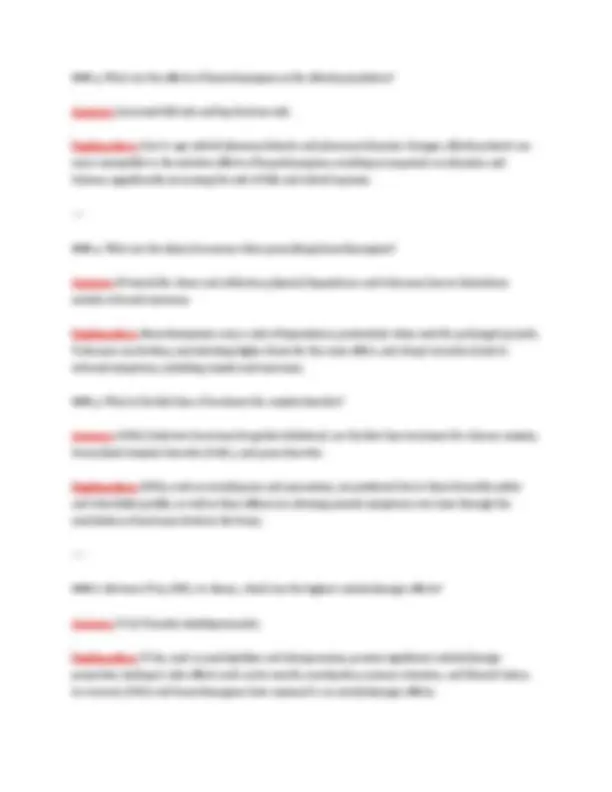
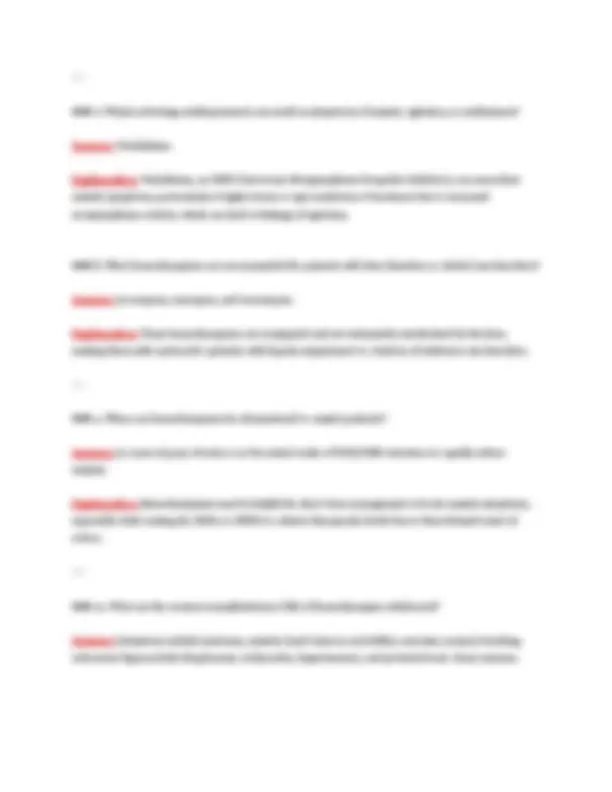
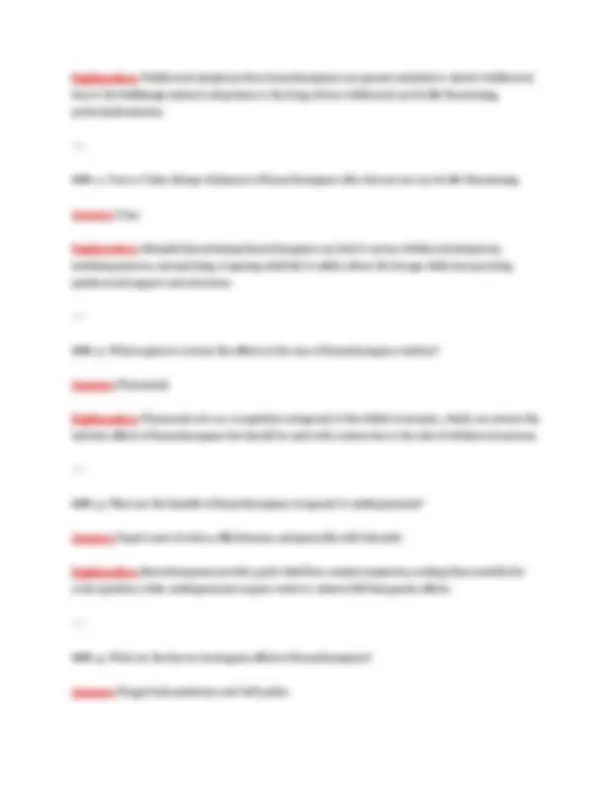
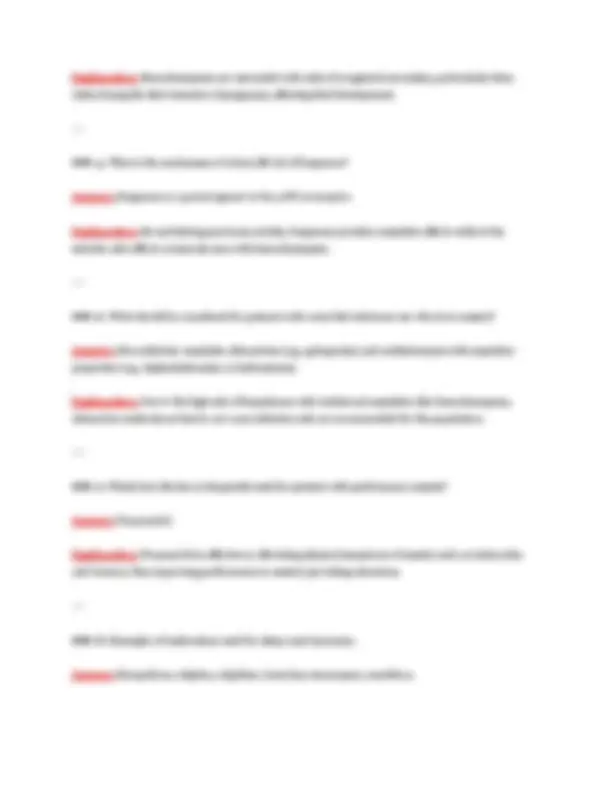
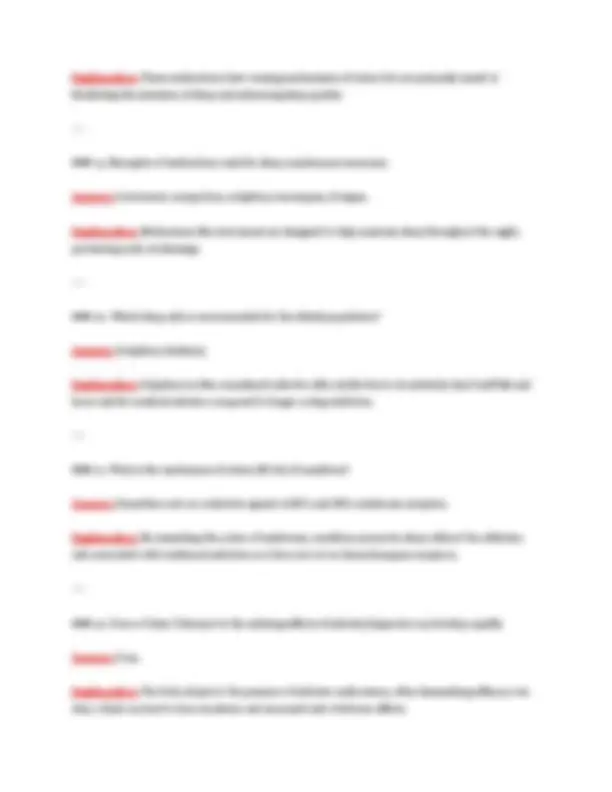
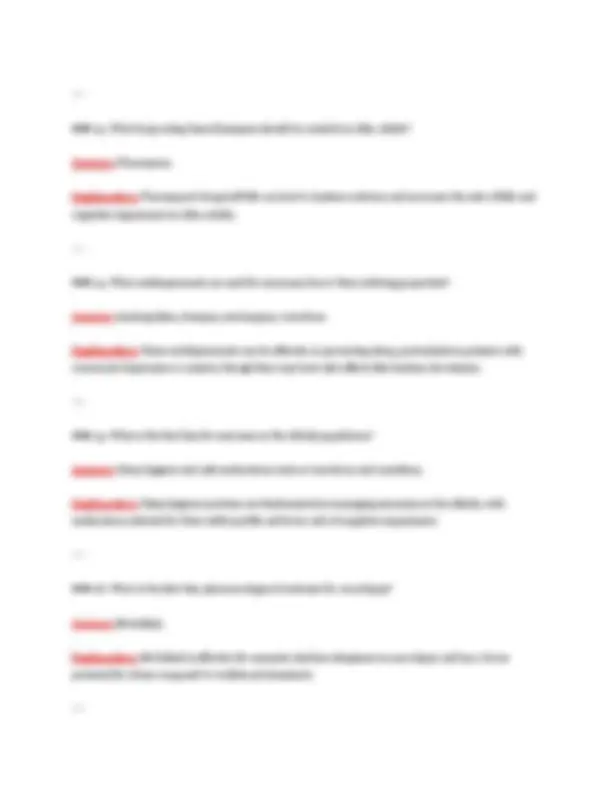
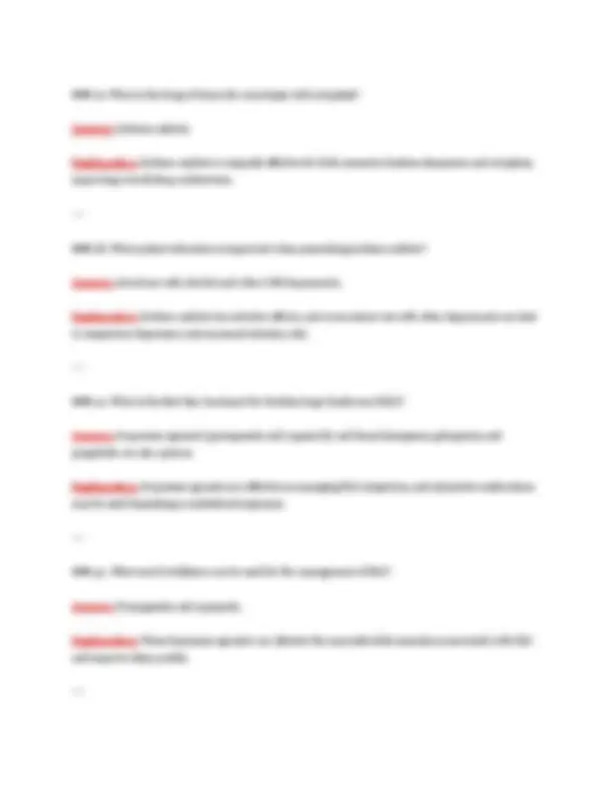
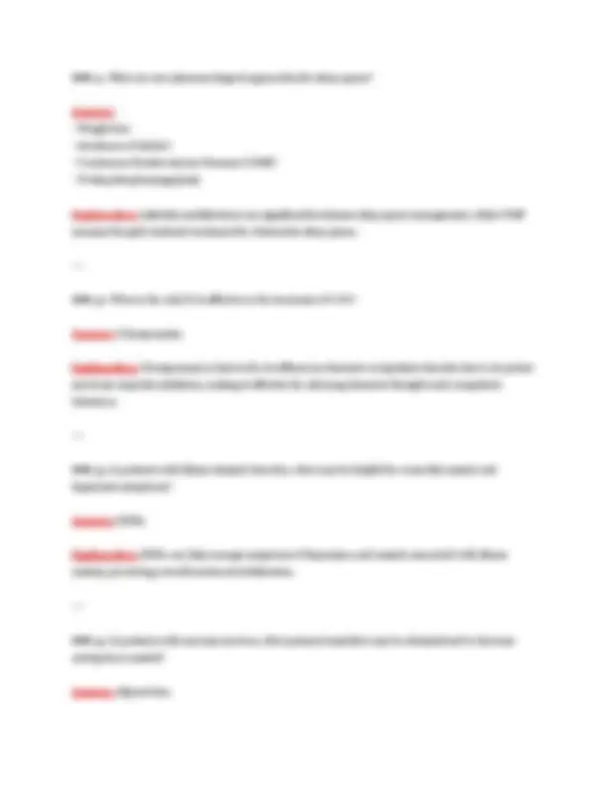
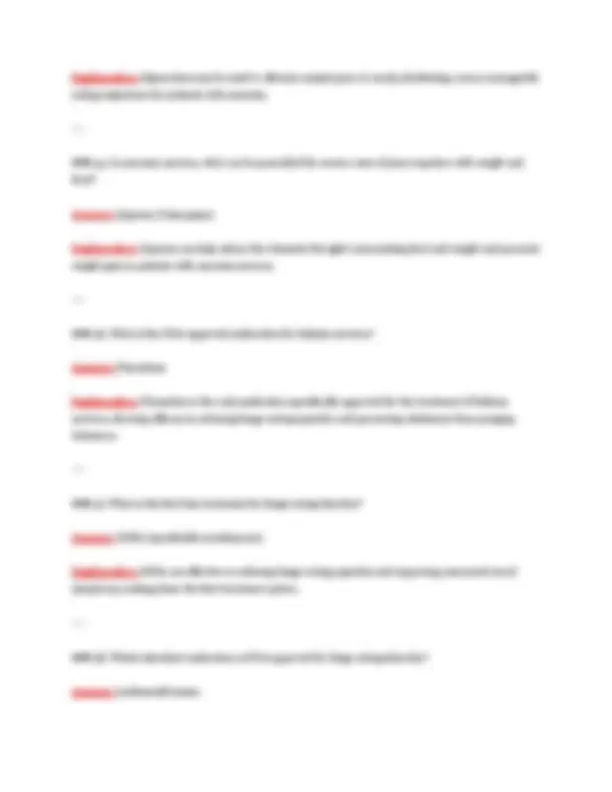
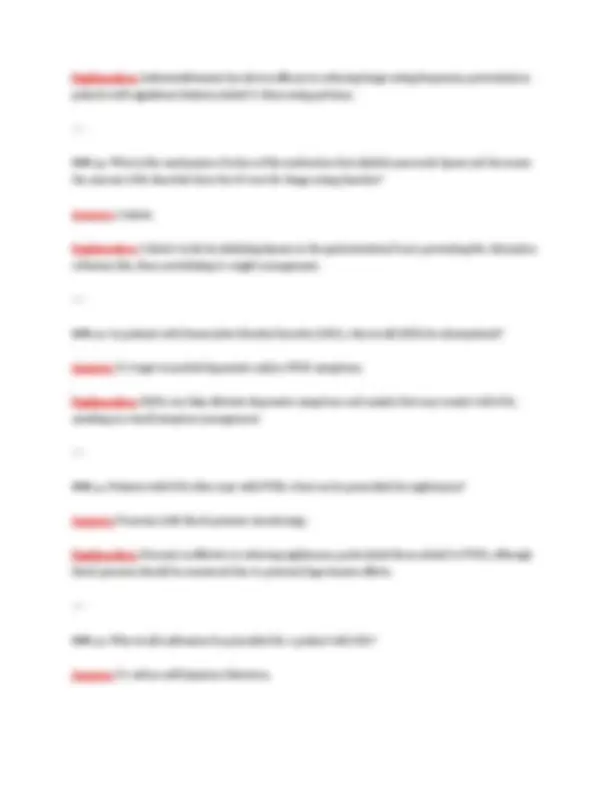
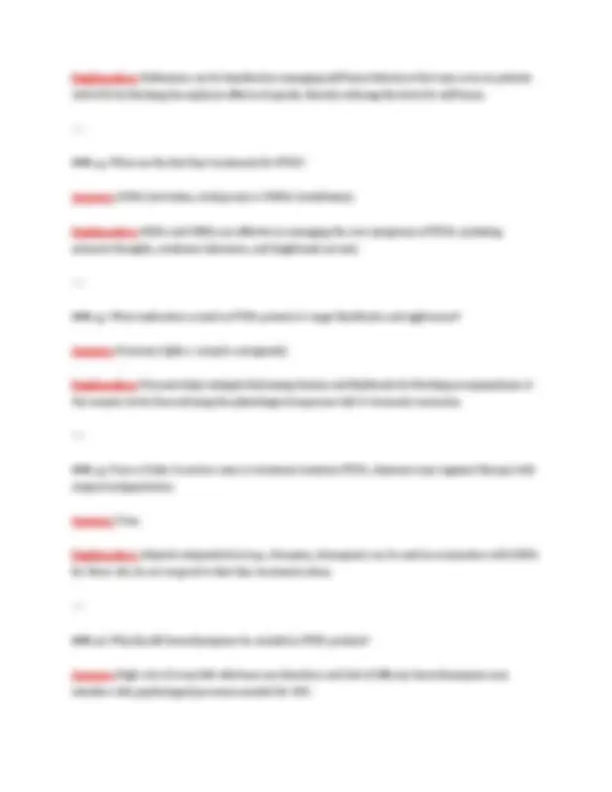
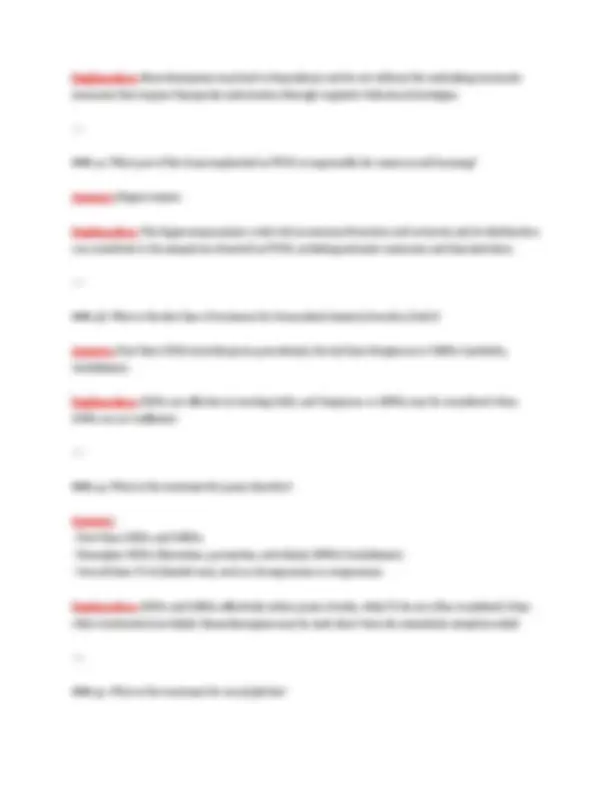
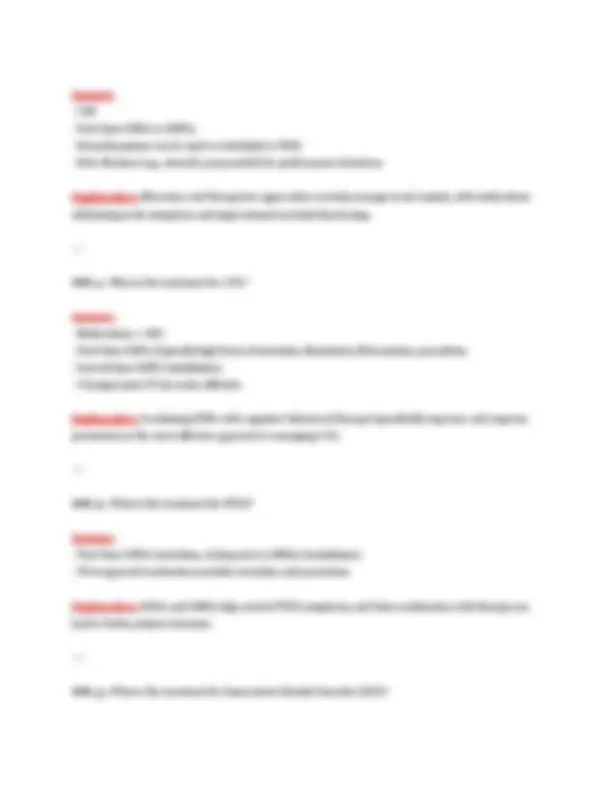
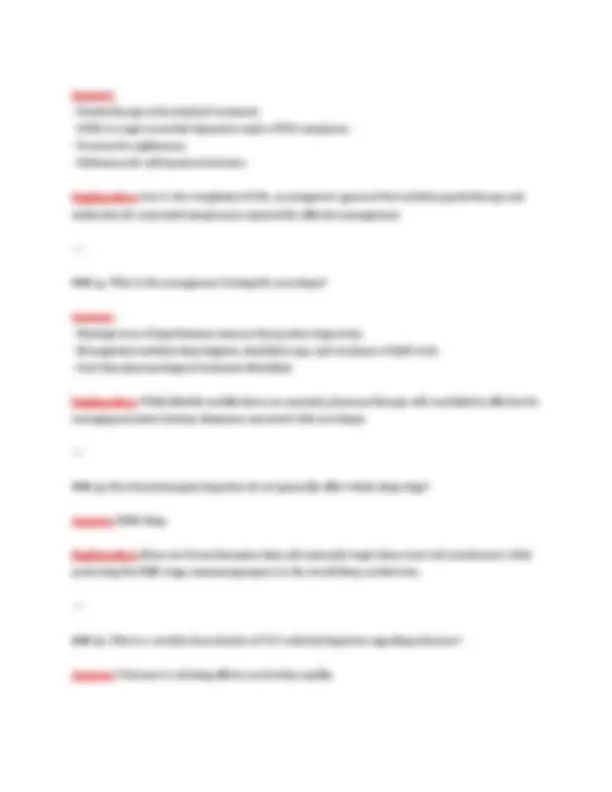
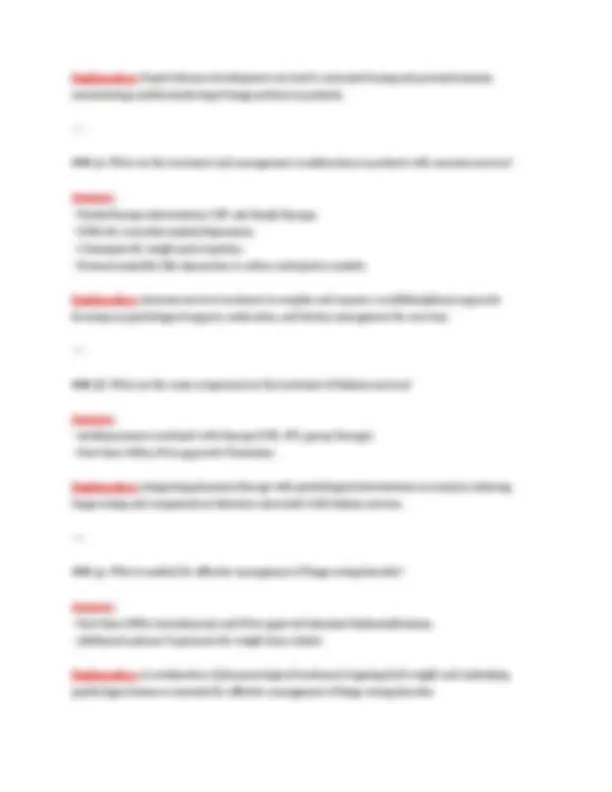



Study with the several resources on Docsity

Earn points by helping other students or get them with a premium plan


Prepare for your exams
Study with the several resources on Docsity

Earn points to download
Earn points by helping other students or get them with a premium plan
Community
Ask the community for help and clear up your study doubts
Discover the best universities in your country according to Docsity users
Free resources
Download our free guides on studying techniques, anxiety management strategies, and thesis advice from Docsity tutors
NSG552 / NSG 552 EXAM 2 (2 VERSIONS EXAMS) Psychopharmacology - Wilkes (Latest 2025 / 2026): Most Comprehensive Qs & Ans - to Pass the Exam With Confidence NSG552 exam NSG552 exam 2025 NSG552 exam 2026 NSG552 Wilkes psychopharmacology psychopharmacology exam prep NSG 552 exam answers NSG 552 study guide Wilkes NSG552 latest exam NSG 552 comprehensive questions pass NSG552 exam NSG 552 review materials psychopharmacology test questions NSG 552 exam versions Wilkes psychopharmacology exam 2025 Wilkes psychopharmacology exam 2026 NSG552 exam confidence psychopharmacology practice exam NSG552 Q&A Wilkes NSG exam NSG552 exam study tips NSG 552 past exams NSG552 exam preparation NSG552 exam resources Wilkes exam NSG552 NSG552 exam format NSG 552 success strategies NSG 552 exam info study for NSG552
Typology: Exams
1 / 52

This page cannot be seen from the preview
Don't miss anything!













































This Exam contains: (2 Exams) 100% Guarantee Pass. Multiple-Choice (A–D), For Each Question. Each Question Includes The Correct Answer Expert-Verified explanation Table of Contents NSG552 / NSG 552 EXAM 2 VERSION 1 .......................................................................................................... 2 NSG552 / NSG 552 EXAM 2 VERSION 2 ........................................................................................................ 36
### 1. Why are benzodiazepines contraindicated in PTSD treatment? Answer: Benzodiazepines are contraindicated because they interfere with cognitive processes necessary for cognitive-behavioral therapy (CBT) and carry a high risk of dependence, particularly in patients with comorbid substance use disorders (SUD). Explanation: While benzodiazepines may provide short-term relief for anxiety, their sedative effects can hinder emotional processing and cognitive functions critical for recovery. This makes them unsuitable for PTSD treatment, where therapeutic engagement is vital.
### 2. What medications are FDA-approved to treat PTSD? Answer: Sertraline and paroxetine are the FDA-approved medications for treating PTSD. Explanation: These SSRIs have undergone rigorous clinical testing demonstrating their efficacy in relieving PTSD symptoms. Their approval indicates their importance in treatment protocols, offering relief and improving quality of life for affected individuals.
### 3. When would you augment treatment of PTSD with an atypical antipsychotic? Answer: Augmentation with an atypical antipsychotic is considered only in severe cases of PTSD. Explanation: Atypical antipsychotics may be effective in managing severe PTSD symptoms, especially when first-line medications fail. However, they carry more significant side effects and risks, so their use should be reserved for patients who have not responded to SSRI treatment.
### 4. What co-occurring disorder do patients with DID typically have? Answer: Patients with Dissociative Identity Disorder (DID) often have co-occurring Post-Traumatic Stress Disorder (PTSD).
Answer: SSRIs are effective for treating co-occurring depressive and PTSD symptoms in patients with Dissociative Identity Disorder (DID). Explanation: By targeting depressive symptoms and anxiety, SSRIs facilitate better emotional regulation, thereby improving overall functioning and therapeutic outcomes for patients with DID.
### 9. What are the suggested treatments for adjustment disorders? Answer: Suggested treatments for adjustment disorders include psychotherapy and pharmacotherapy to address associated symptoms like anxiety, depression, and insomnia. Explanation: Psychotherapy provides a supportive structure to help individuals process their emotional responses, while medication may alleviate acute symptoms, leading to quicker stabilization and recovery.
### 10. In patients with DID, what medication is used to reduce self-injurious behaviors? Answer: Naltrexone is used to reduce self-injurious behaviors in patients with Dissociative Identity Disorder (DID). Explanation: Naltrexone, an opioid antagonist, helps manage impulsive behaviors by mitigating the underlying drives that lead to self-harm. This can be an important aspect of stabilizing patients and enhancing their treatment response.
### 11. Is ECT contraindicated in DID? Answer: No, ECT is not contraindicated in DID; it can be effective for concurrent depression and anxiety, especially if symptoms are treatment-resistant. Explanation: Electroconvulsive therapy (ECT) can offer relief for severe mood symptoms that often accompany DID. When applied judiciously, ECT can be an effective intervention, given careful consideration of the patient’s specific circumstances and history.
### 12. What are the suggested treatments for excoriation disorder?
Answer: Suggested treatments for excoriation disorder include psychotherapy, SSRIs to manage concurrent anxiety/depression, antipsychotics, and anxiolytics. Explanation: The treatments aim to address the underlying emotional regulatory issues and compulsive behaviors associated with skin-picking, providing a comprehensive approach to healing.
### 13. What disorder has the following characteristics: recurrent skin picking that results in lesions despite attempts to stop? Answer: Excoriation disorder. Explanation: This disorder is characterized by compulsive skin-picking resulting in measurable damage to the skin, representing an emotional distress response that can lead to significant psychosocial impairment.
### 14. What is the suggested treatment for trichotillomania? Answer: Suggested treatments for trichotillomania include psychotherapy, SSRIs for concurrent anxiety/depression, clomipramine, and atypical antipsychotics such as lithium or N-acetylcysteine. Explanation: A combination of therapeutic and pharmacological methods can help address both the behavioral symptoms and any concurrent emotional issues, leading to improved outcomes for those affected.
to stop? Answer: Trichotillomania. Explanation: Trichotillomania involves an uncontrollable urge to pull out hair, leading to hair loss and emotional distress. Understanding its compulsive nature can aid in effective treatment planning.
Explanation: This disorder reflects a deep-seated dissatisfaction with appearance, resulting in compulsive behaviors aimed at rectifying perceived flaws, leading to significant emotional distress and impaired functioning.
Answer: Recommended treatments for Dissociative Identity Disorder (DID) include psychotherapy, SSRIs to target comorbid depressive/PTSD symptoms, Prazosin for nightmares, and Naltrexone to decrease self-injurious behaviors. Explanation: A comprehensive treatment approach that addresses both dissociative symptoms and associated comorbidities is crucial for managing DID effectively. These interventions aim to stabilize the patient's condition and ultimately promote recovery.
and chronic childhood trauma; often co-occurs with PTSD; fragmented sense of self; >70% suicide attempts/self-harm. Answer: Dissociative Identity Disorder. Explanation: DID is characterized by the presence of two or more distinct personality states or identities, often as a coping mechanism to manage overwhelming trauma, leading to significant psychosocial impairment.
Answer: No, there are currently no medications specifically effective in treating depersonalization/derealization. Explanation: While symptomatic treatment may address associated anxiety or depression, the unique nature of depersonalization/derealization often requires therapeutic approaches focusing on coping strategies and grounding techniques.
avoiding the street where the event occurred. On sertraline. What medication would you add? Answer: Atypical antipsychotic (e.g., quetiapine) could be considered if symptoms are severe, or a medication like Prazosin for nightmares could be added. Explanation: If a patient remains symptomatic despite SSRIs, medication augmentation with antipsychotics may be warranted, particularly cautiously suggested in severe PTSD cases.
Answer: No, there are no specific medications effective for treating dissociative amnesia. Explanation: Treatment primarily revolves around supportive therapy and processing the traumatic memories rather than medication, which lacks efficacy in addressing the dissociative symptoms directly.
other autobiographical information? Answer: Dissociative fugue. Explanation: Dissociative fugue represents a rare dissociative condition where the individual suddenly leaves their home environment, often resulting from severe psychological distress and memory gaps concerning personal history.
history of trauma, inconsistent with ordinary forgetfulness? Answer: Dissociative amnesia.
Answer: Amnesia. Explanation: Amnesia refers to a selective or global inability to recall personal information, often linked to psychological trauma or neurological conditions.
separating a disruption in the integrated sense of self? Answer: Dissociation. Explanation: Dissociation serves as a psychological defense strategy wherein an individual may compartmentalize experiences or feelings, allowing them to cope with traumatic or stressful situations.
Answer: Hippocampus. Explanation: The hippocampus plays a crucial role in memory formation and retrieval. Alterations in its functioning can lead to the hyperarousal and intrusive memories characteristic of PTSD.
with no compensatory behaviors (vomiting/laxatives, etc.), and is usually obese? Answer: Binge-eating disorder. Explanation: Individuals with binge-eating disorder consume large quantities of food without compensatory purging behaviors, leading to distress and often obesity. Understanding this pattern aids in tailoring appropriate interventions.
Answer: First-line treatments include SSRIs (such as escitalopram), psychotherapy, and FDA-approved medications like Vyvanse. Other options include topiramate and orlistat. Explanation: A comprehensive treatment plan addresses both the behavioral aspects of binge eating and any comorbid psychological issues, promoting healthier coping strategies and weight management.
Answer: The primary treatment for bulimia nervosa is cognitive-behavioral therapy (CBT) combined with antidepressants/SSRIs, with fluoxetine being the only FDA-approved medication for this condition. Explanation: CBT focuses on changing unhealthy eating patterns and cognitive distortions surrounding weight and body image. Medication can support therapeutic efforts by addressing underlying mood disorders.
Answer: Insomnia is characterized by difficulty falling asleep or remaining asleep, with acute insomnia lasting less than 3 months and chronic insomnia lasting more than 3 months. Explanation: Understanding the nature and duration of insomnia is essential for effective diagnosis and choosing appropriate treatment modalities, which may include behavioral therapies and pharmacological interventions.
laxatives, diuretics, etc.), embarrassment about binge eating, and an intense concern about body weight, typically maintaining normal weight or being overweight? Answer: Bulimia nervosa.
Explanation: By mimicking the action of melatonin in the body, Ramelteon helps regulate circadian rhythms and promote sleep, especially in individuals with sleep onset difficulties.
Answer: Non-pharmacologic treatments include weight loss, avoidance of alcohol, continuous positive airway pressure (CPAP), and uvulopalatopharyngoplasty. Explanation: Addressing lifestyle factors can significantly improve sleep apnea symptoms. Additionally, surgical interventions may provide long-term relief in specific cases.
Answer: Side effects may include anterograde amnesia, hallucinations, parasomnias (such as sleepwalking and eating), increased fall risk, and gastrointestinal effects. Explanation: Awareness of these side effects is essential for both healthcare providers and patients to monitor and mitigate potential risks associated with Zolpidem use.
Answer: Treatments include removing offending agents, iron replacement, with first-line therapy being dopamine agonists (pramipexole and ropinirole). Gabapentin, pregabalin, and benzodiazepines may also be effective. Explanation: Tailored management strategies can significantly reduce symptoms of RLS, improving patients' quality of life and facilitating better sleep.
Answer: Zolpidem selectively binds to the Omega-1 receptor on the GABA-A receptor, which is responsible for sedation. Explanation: Targeting specific receptor subtypes allows for effective sedative effects while minimizing some of the adverse effects associated with broader GABAergic activity.
Answer: Risk factors for Restless Legs Syndrome include iron-deficiency anemia, certain antidepressants/antipsychotics, advancing age, dopamine-blocking antiemetics, antihistamines, and a family history. Explanation: Understanding these risk factors can help clinicians identify patients at higher risk for RLS and implement early management techniques.
Answer: Medications for sleep maintenance include suvorexant, eszopiclone, zolpidem, temazepam, and doxepin. Explanation: These medications target sleep architecture to promote a more stable and restorative sleep experience, particularly for patients with chronic insomnia.
Answer: Medications for sleep onset include eszopiclone, zaleplon, zolpidem, triazolam, temazepam, and ramelteon. Explanation: Each of these agents works via different mechanisms to assist individuals in initiating sleep, with varying durations of action and side effect profiles.
months, believe they are ill, and do not intentionally produce symptoms? Answer: Somatic Symptom Disorder. Explanation: This disorder reflects genuine distress and impairment related to physical symptoms that may not have a fully explainable medical cause, necessitating a compassionate approach to management.
Answer: Treatment for anorexia commonly includes SSRIs for concurrent depression, alprazolam, olanzapine, and cognitive-behavioral therapy (CBT). Explanation: Effective management of anorexia involves a multi-faceted approach that focuses on nutritional rehabilitation and addressing underlying psychological issues, laying the groundwork for long- term recovery.
two types (restricting and binge/purging); intense fear of gaining weight/being fat; restricts calories; low body weight: anorexia nervosa. Answer: Anorexia nervosa. Explanation: This disorder involves extreme dietary restrictions and a distorted body image, significantly impacting physical and mental health. Comprehensive treatment strategies are vital for addressing both the disorder and its physical consequences.
Answer: Bupropion is contraindicated in eating disorders because it lowers the seizure threshold.
Explanation: The risk of seizures poses a significant danger for individuals with eating disorders who may already have electrolyte imbalances or other medical complications, necessitating alternative therapies.
Answer: Management strategies for narcolepsy include sleep hygiene practices, daytime naps, avoidance of shift work, and Modafinil as first-line treatment. Explanation: A combination approach that incorporates lifestyle modifications and pharmacotherapy can significantly enhance sleep quality and daytime functioning in individuals with narcolepsy.
associated with psychosomatic disorders? Answer: Selective Serotonin Reuptake Inhibitors (SSRIs). Explanation: SSRIs have demonstrated efficacy in managing obsessive thoughts and anxiety associated with psychosomatic disorders, improving overall mental health outcomes for affected individuals.
Answer: Treatments for insomnia include sleep hygiene, CBT, chronotherapy (bright light therapy), benzodiazepines (short-term), non-benzodiazepines (like melatonin, Ambien, Lunesta), and certain antidepressants such as trazodone or low-dose Remeron. Explanation: Implementing effective non-pharmacologic strategies can often enhance sleep quality, with medications reserved for cases where behavioral interventions are not sufficient.
Answer: Recommended treatments include collaboration with primary care providers and confrontation in a non-threatening manner. Explanation: An empathetic and collaborative approach can help address the underlying psychological issues while minimizing the risk of conflict or resistance during the treatment process.
Answer: Antidepressants with sedating properties include amitriptyline, doxepin, mirtazapine, and trazodone. Explanation: These medications can be beneficial for patients who experience insomnia or anxiety, providing sedation alongside their antidepressant effects.
psychological signs and symptoms to assume a sick role, with the absence of external rewards, and repeated, long hospitalizations? Answer: Factitious disorder. Explanation: This disorder involves intentionally producing or feigning symptoms without obvious external gains, aimed instead at fulfilling a psychological need for attention and care.
Answer: Flurazepam should be avoided in the elderly due to its long half-life, which may cause excessive drowsiness.
Explanation: The risk of prolonged sedation and impaired cognitive functioning in older adults necessitates the careful selection of medications that minimize potential side effects.
Answer: Treatments include SSRIs for accompanying depression/anxiety, regular visits with a primary care provider, and cognitive-behavioral therapy (CBT). Explanation: These interventions focus on addressing the psychological aspects of the disorder while providing reassuring medical care to help alleviate anxiety and improve overall mental health.
Answer: Recommended treatments include education about the illness and cognitive-behavioral therapy (CBT). Explanation: Educating patients about their condition and employing CBT can facilitate better understanding and coping strategies, leading to symptom relief and improved functioning.
Answer: Recommended treatments include regular visits with a primary care provider and gradually addressing psychological issues. Explanation: Building a trusting therapeutic alliance with ongoing health care support allows for the gradual exploration of psychological factors contributing to somatic symptoms.
symptoms or mild symptoms lasting for 6 months or more, accompanied by excessive health-related behaviors?